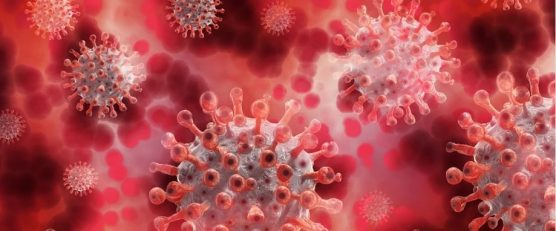The California Department of Public Health is announcing updates to several state public health officer orders that have guided Californians on how to best protect themselves and their families throughout the pandemic.
The updates to the orders related to vaccination, masking, isolation and quarantine will take effect in the coming days and weeks. Oregon and Washington have made similar announcements related to masking.
CDPH reminds Californians that critical tools to fight COVID-19 remain available to everyone at low or no cost. This includes access to COVID-19 vaccines, testing and treatment.
“We stand before Californians today with a humble message of thanks for taking the hard steps to help manage COVID-19, and with an ongoing commitment to be prepared for what comes next,” said CDPH Director and State Public Health Officer Dr. Tomás Aragón. “Our communities did a lot of the hard work by getting vaccinated and boosted, staying home and testing when sick, requesting treatments when positive, and masking to slow the spread. With these critical actions, and a lot of patience and persistence, we have now reached a point where we can update some of the COVID-19 guidance to continue to balance prevention and adapting to living with COVID-19.”
CDPH is making the following changes to existing COVID-19 guidance:
Masking in High-risk and Health Care Settings
Beginning April 3, masks will no longer be required in indoor high-risk and health care settings. This includes health care, long-term care, and correctional facilities as well as homeless, emergency, and warming and cooling centers. This change takes effect on Monday, April 3 to allow local health departments and individual health care facilities to develop and implement plans customized to their needs and local conditions to continue to protect Californians through the end of the winter virus season. CDPH’s recommendations for the use of face masks for individuals remain unchanged. See masking guidance.
Vaccine Requirements for Health Care Workers
Beginning April 3, with federal rules continuing to ensure that most health care workers remain vaccinated for COVID-19, the state will no longer require vaccination for health care workers including those in adult care, direct care, correctional facilities, and detention centers. This change takes effect on Monday, April 3 to allow local health departments and facilities to develop and implement plans customized to their needs and local conditions to continue to protect Californians through the end of the winter virus season.
Reduced Isolation Time After Positive COVID-19 Test
Beginning March 13, a COVID-19 positive person may end isolation after five days if they feel well, have improving symptoms, and are fever-free for 24 hours, with less emphasis on testing negative. This change aligns with Centers for Disease Control and Prevention recommendations and takes effect on Monday, March 13.
Disease Control and Prevention Order
The state public health officer order formerly known as Beyond the Blueprint is being updated to align with CDPH’s isolation and quarantine recommendations above and includes an updated definition for a confirmed COVID-19 case. The updated order, which will take effect March 13, provides prevention and mitigation strategies for slowing the spread of COVID-19 in homes, workplaces and communities.
Hospital Surge Order
On April 3, CDPH will rescind an order that required hospitals statewide to accept transfer patients from facilities with limited ICU capacity as needed. ICU capacity has not been limited during recent COVID-19 surges after the broad use of vaccines and treatments.
Vaccine Data Collection
Also being rescinded on April 3 is an order that required providers to ask patients for their email addresses and/or mobile phone numbers when receiving a COVID-19 vaccine. New legislation requires that California healthcare providers who administer vaccines to enter information about patients, including telephone numbers and race and ethnicity.
Access to Vaccines, Testing and Treatment Remain Available
COVID-19 vaccines, testing, and treatment continue to be available through providers and some pharmacies and at some sites within local communities. Visit MyTurn to find services in your area.
Treatment is available through providers and some pharmacies. Individuals who are uninsured or can’t get timely treatment can call 833-686-5051 or visit sesamecare.com/covidca.
Underutilized Support
In recent weeks, California has begun to wind down some underutilized emergency COVID-19 supports across California. This includes state-funded testing and test-to-treat sites, vaccine staff, outbreak response teams, mobile vaccine units and pop-up vaccination events.
Some other impacts to public health programs and initiatives include:
Reduced state support for local contact tracing efforts.
Fewer staffing flexibilities for hospitals and nursing homes.
End of reduced training and certification requirements for certified nursing assistants and home health aides.
Ending the expedited license processing for facilities performing COVID-19 tests.
Work Ahead
The state worked with the California Legislature to extend two authorities, including allowing nurses to continue to dispense COVID-19 therapeutics as part of a state-run test-to-treat program and clarifying who can process COVID-19 laboratory tests. Legislation was signed yesterday, see information here.
The SMARTER Plan will maintain California’s operational preparedness to address the next phase of the COVID-19 pandemic and will ensure the state keeps equity in mind as we support communities across the state.
Public Health Infrastructure
CDPH is able to announce these updates today due to the significant investments California has made in public health infrastructure to respond to COVID-19. CDPH continues to monitor the science and current recommendations from the Centers for Disease Control and Prevention to inform and update guidance.
Throughout the pandemic, California has led the nation in its COVID-19 response effort in collaboration with community-based organizations and local government agencies to address statewide health disparities and built an unprecedented public health infrastructure.
Over the course of the pandemic, California:
Saved countless lives, prevented infection and severe illness, and continues to have one of the lowest COVID-19 death rates in the nation.
Led the nation in keeping students and staff safe in classrooms.
Administered 88 million vaccinations, with nearly 73 percent of the state’s population receiving the primary vaccine series.
Processed more than 186 million tests and launched a state laboratory to help meet California’s goal of expanding equitable and affordable access to COVID-19 testing.
Helped administer more than 1,748,251 COVID-19 treatment courses.
Distributed more than 1 billion pieces of personal protective equipment, including masks.
In addition to investments in vaccines, testing and treatment, the state:
Expanded and improved telehealth resources.
Modernized data collection tools.
Improved disease monitoring and modeling.
Developed and utilized wastewater surveillance.
Developed a statewide contact tracing program and information system.
Launched many new tools for the public, including covid19.ca.gov, MyTurn, CANotify and MyVaccineRecord.
Created multiple COVID-19 outreach and awareness campaigns, including Vaccinate All 58, Mothers, and Test It Treat It You Can Beat It, with a focus on reducing social and health inequities that became magnified during the pandemic.
Developed the SMARTER plan to continue to refine our ongoing pandemic and COVID-19 disease response.
Developed and improved academic collaboration to inform public health response.
For more information on how the end of the California and federal state of emergency will impact California, visit the California Health and Human Services website.
Like this:
Like Loading...
Related





 Tweet This
Tweet This Facebook
Facebook Digg This
Digg This Bookmark
Bookmark Stumble
Stumble RSS
RSS

























REAL NAMES ONLY: All posters must use their real individual or business name. This applies equally to Twitter account holders who use a nickname.
0 Comments
You can be the first one to leave a comment.